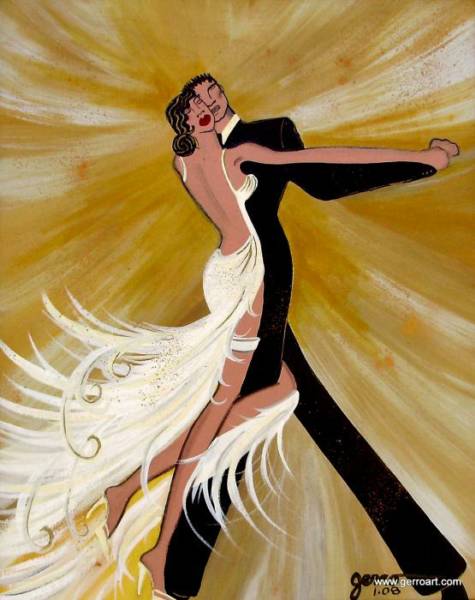Cha-Cha
Cha-cha is the name of a Latin American dance of Cuban origin. It is danced to the music of the same name introduced by Cuban composer and violinist Enrique Jorrín in 1953. This rhythm was developed from the danzón by a syncopation of the fourth beat. The name is onomatopoeic, derived from the rhythm of the güiro (scraper) and the shuffling of the dancers’ feet.
Origin
The modern style of dancing the Cha-cha-chá comes from studies made by dance teacher Monsieur Pierre (Pierre Zurcher-Margolle), who partnered Doris Lavelle. Pierre, then from London, visited Cuba in 1952 to find out how and what Cubans were dancing at the time. He noted that this new dance had a split fourth beat, and to dance it one started on the second beat, not the first. He brought this dance idea to England and eventually created what is known now as ballroom Cha-cha-cha. The validity of his analysis is well established for that time, and some forms of evidence exist today. First, there is in existence the film of Orquesta Jorrin playing to a cha-cha-cha dance contest in Cuba. Second, the rhythm of the Benny More classic Santa Isabel de las Lajas written and recorded at about the same time is quite clearly syncopated on the fourth beat. Also, note that the slower Bolero-son (“Rumba”) was always danced on the second beat.
Description
Cha-cha-cha may be either danced to authentic Cuban music, or Latin Pop or Latin Rock. The music for the international ballroom cha-cha-cha is energetic with a steady beat. The Cuban Cha-cha-chá is more sensual and may involve complex polyrhythms.
Styles of the Cha-cha-cha dance may differ in the place of the chassé in the rhythmical structure. The original Cuban and the ballroom Cha-cha-cha count is “two, three, chachacha” or “four-and-one, two, three”. The dance does not start on the first beat. Nevertheless, many social dancers count “one, two, cha-cha-cha” and may find it difficult to make the adjustment to the “correct” timing of the dance.
International Latin Style Cha-cha-cha
Cha-cha-cha is one of the five dances of the “Latin American” program of international ballroom competitions.
As described above, the basis of the modern dance was laid down in the 1950s by Pierre & Lavelle and developed in the 1960s by Walter Laird and other top competitors of the time. The basic steps taught to learners today are based on these accounts.
In general, steps are kept compact and the dance is danced generally without any rise and fall. The modern ballroom technique of Cha-cha-cha (and other ballroom dances) does undergo gradual evolution, particularly in competition dancing, but in essence is still firmly based on its Cuban origin in the 1950s.
Music Examples:
1. Sway by Rio Combo
2. Sex Bomb by Tom Jones
3. Oye Como Va by Carlos Bose

